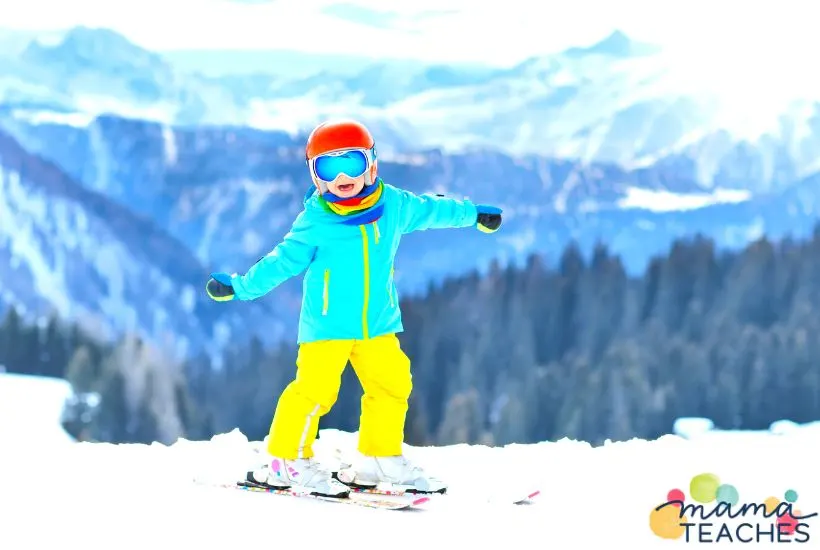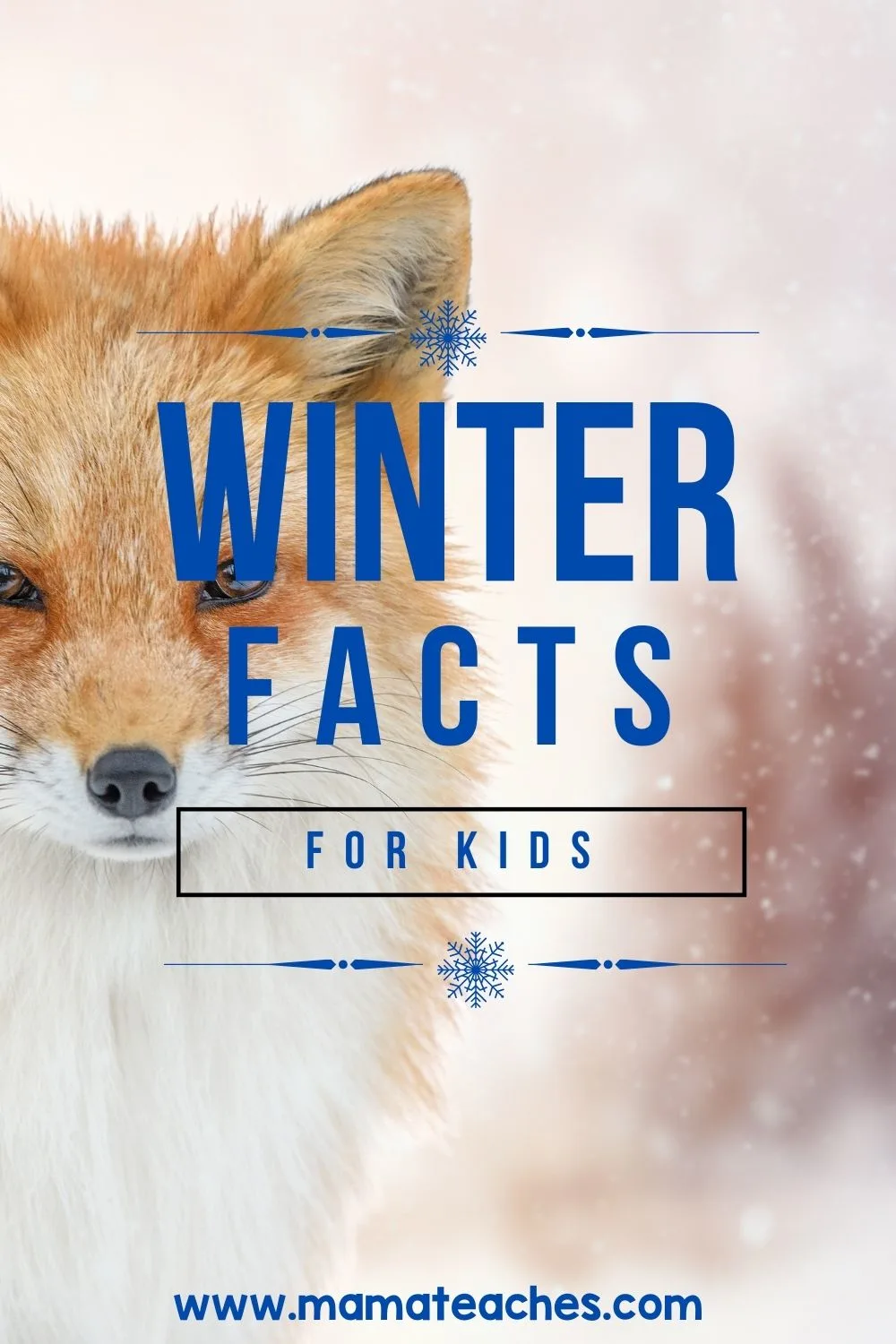The winter season is filled with snowflakes, hibernating animals, and ice lakes. Find out more about this season of wonders with these winter facts for kids.

Basic Facts About Winter
Winter is known for being the coldest season of the year.
It falls between autumn and spring.
The word “winter” comes from the Germanic word “wend” meaning “time of water.”
This refers to the fact that you get a lot of rain and snow in winter.
Now that you know some basic facts about winter, let’s move on to more exciting winter facts for kids.

This article contains affiliate links to things that you might like.
Fun Facts About Winter
Winter is a wonderland! Find out why with these fun facts about winter.
1. The Winter Months Are Different in the Northern and Southern Hemispheres
The winter months are the coldest of the year.
In the Northern Hemisphere, winter falls between December 21 or 22 to March 20 or 21.
In the Southern Hemisphere, winter is between June 21 or 22 to September 22 or 23.
Why the difference?
It has to do with the Earth’s tilt as it orbits the sun.
The Northern Hemisphere is tipped away from the sun from December to March.
Without the sun’s heat, the air temperature is colder.
During that same time, the Southern Hemisphere is closer to the sun, making its weather warm and sunny.
December to March is summer in the Southern Hemisphere.
It is the Southern Hemisphere’s turn to tip away from the sun in June through September.
That creates the winter there.

2. Winters Are Coldest in Oymyakon, Russia
If you think your winters are freezing, ask the residents of the town of Oymyakon in Russia.
Its average winter temperature is -58 degrees Fahrenheit, making it the coldest inhabited town during winter.
The town has two valleys on either side, directing the wind to whisk through the town (which makes it colder than the areas around it).
In the center of town, you will find a monument recording the coldest temperature reached in Oymyakon: -98 degrees Fahrenheit!
3. During a Montana Winter, Snowflakes Were the Size of Dinner Plates
When you picture snowflakes, no doubt you imagine tiny white crystals that cling to your nose and eyelashes.
But snowflake crystals can link together to form “aggregated snowflakes.”
The Guinness Book of World Records states that in January 1887, snowflakes 15 inches wide fell from the sky in Fort Keogh, Montana.
That’s the size of a small pillow!

4. Hamsters Sleep Away the Winter
Wild hamsters, hedgehogs, bats, chipmunks, prairie dogs, box turtles, and other animals hibernate through the winter months.
They turn down their metabolisms and go into this deep sleep to conserve energy during the winter when food is scarce.
These animals eat a lot of food during summer and autumn to build up the fat in their bodies.
This fat provides the energy they need to last all winter in their burrows.
5. Your Shadow Is Tallest in Winter
Because of the tilt of the Earth, the sun is lower on the horizon during the winter months.
The sun strikes you slightly to the side, making your shadow lengthen behind you.
During summer, the sun shines much more overhead in the sky, making your shadow shorter and stockier.

6. You Can See Your Breath in Winter
Have you ever wondered why you can see your breath in winter? It has to do with the temperature in the air.
Your breath isn’t just carbon dioxide; it contains tiny droplets of water vapor (the gas form of water).
When the temperature drop below 45 degrees Fahrenheit (give or take), it is cold enough to change the water vapor from a gas to a liquid.
The fog you see is tiny drops of liquid water in the air.
7. Whales Travel in the Winter, But They Aren’t the Only Ones
Some animals survive the winter months by moving to warmer locations. This is called migration.
Monarch butterflies, whales, Great White Sharks, caribou, and many varieties of birds are among the animals that migrate for winter.
The animal that migrates the farthest is a tiny, 4-ounce, gray and black bird called the arctic tern.
It flies from Greenland to Antarctica and back every year; that’s an astounding 44,000 miles!

8. The Winter Olympics Have Been Around for 100 Years
The first Winter Olympic Games were held in Chamonix, France.
There were originally five categories of winter sports: bobsledding, curling, skating, Nordic Skiing, and ice hockey.
Since then, more winter sports have been added to the order of events.
These include short-track speed skating, luge, freestyle skiing, and snowboarding.

Read More About Winter
If you are eager for more winter facts for kids, check out these books!
Animals in Winter
This early reader showcases various animals that are out and about during the season of winter.
Winter Wonderland
In this National Geographic Book for Kids, you’ll find pictures of beautiful winter scenes and descriptions of winter traditions.
Curious About Snow
This Smithsonian picture book tells about winter’s tiniest wonder: the snowflake.
